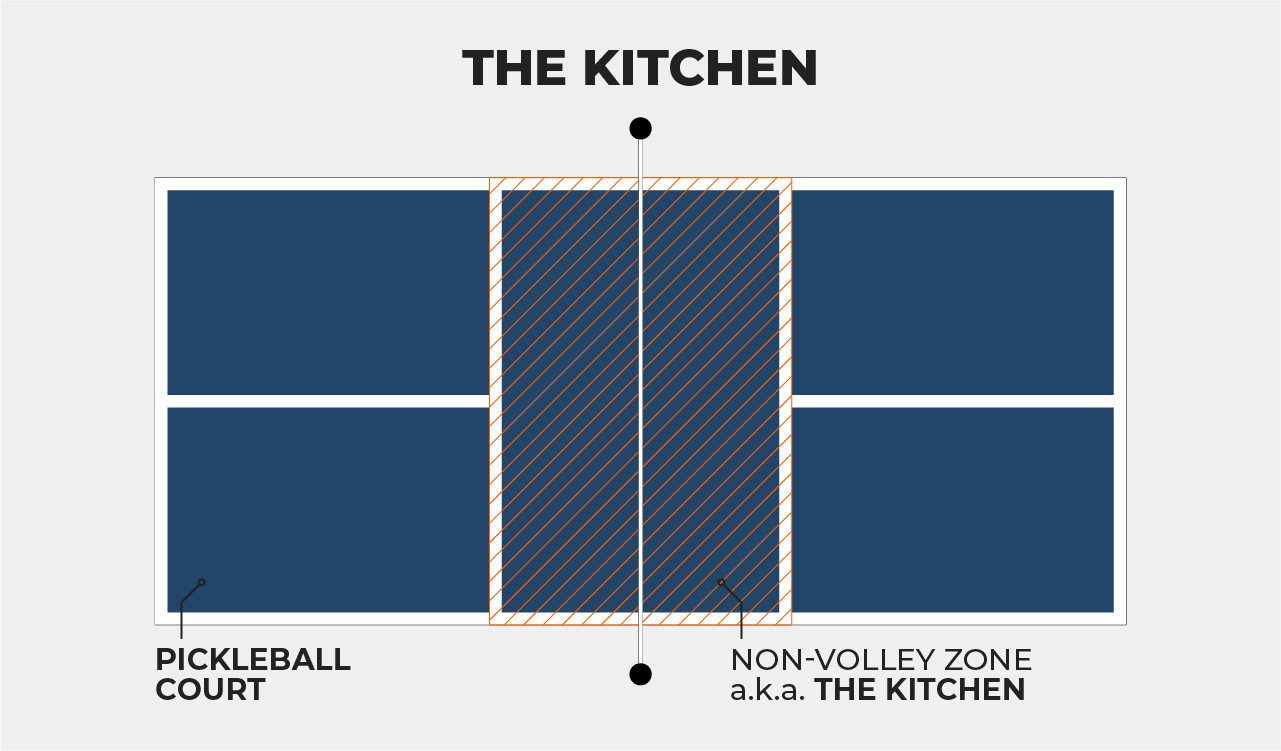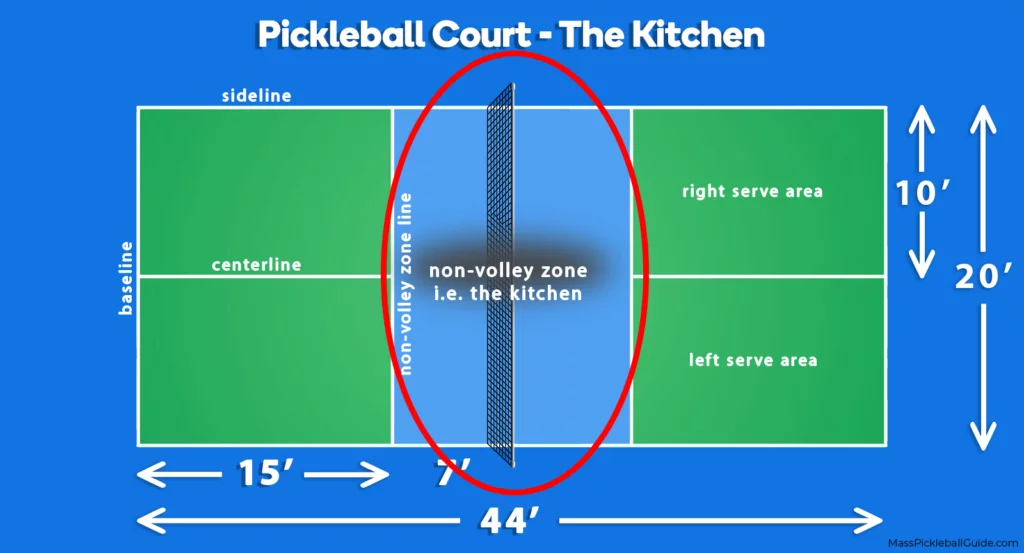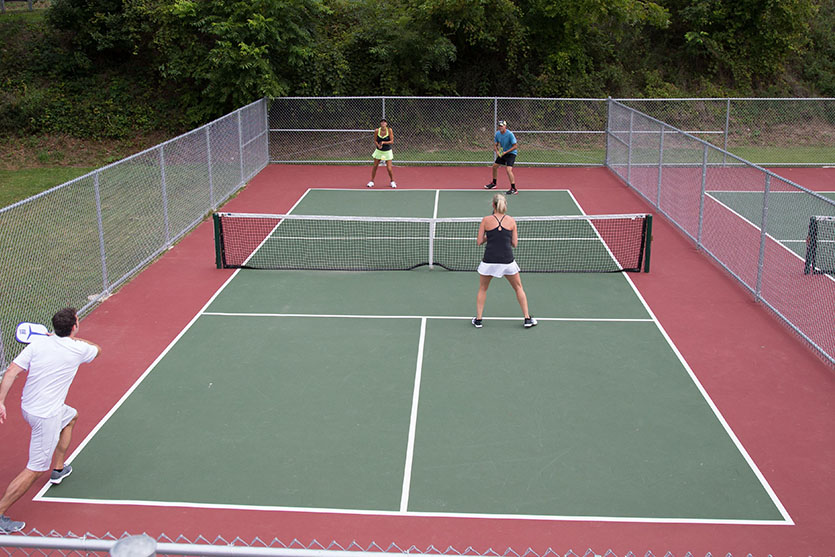Why is it called kitchen in pickleball
In the quirky world of pickleball, terminology can often seem odd or whimsical. One such term is the “kitchen,” which refers to the non-volley zone on the court where players are unable to hit the ball before it bounces. But why is it called kitchen in Pickleball? This article aims to dissect the origins of this unique term and its significance in the gameplay of pickleball. Understanding the term not only enriches one’s acquaintance with the sport but also adds a layer of strategy to every player’s game, allowing them to better navigate this crucial area on the court.
The kitchen: a non-volley zone
The “kitchen” is more formally known as the non-volley zone (NVZ) in pickleball. This specific area extends 7 feet from the net on either side and serves a critical role in shaping the dynamics of the game. As players rally back and forth, the kitchen becomes a focal point where critical strategic decisions must be made.

Within this zone, players are prohibited from volleying, which means they cannot hit the ball before it has bounced. This regulation is designed not only to slow down the pace of the game but also to emphasize strategy and positioning. To many, the kitchen acts as a double-edged sword. It can be a sanctuary for defensive players who want to regroup while simultaneously presenting an opportunity for offensive players to capitalize on their opponent’s mistakes.
For instance, if a player is forced into the kitchen due to a well-placed shot, they must adopt a more cautious approach, often focusing on controlling their next shot effectively. The gameplay within the kitchen can foster creativity and strategy as players maneuver to set up their subsequent plays. The kitchen, therefore, alters the tempo of the match, requiring players to adapt their style, think critically, and make strategic decisions about their positioning on the court.
Why is it called kitchen in pickleball?

Theory 1: Shuffleboard
Several theories surround the intriguing origin of the term “kitchen” in pickleball. One popular narrative is the shuffleboard theory, which links the non-volley zone in pickleball to a similar region in shuffleboard. In shuffleboard, the kitchen is an area toward the end of the board where players must be cautious not to land their pucks in order to retain scoring points. Some enthusiasts suggest that the same terminology may have seamlessly translated into the vernacular of pickleball, particularly given that both games require nuanced understanding and control.
Theory 2: The “soup’s on”
Another theory is known as the “soup’s on” theory. This term historically referred to a signal indicating that a meal was ready, often said at the dinner table. Connecting this concept to pickleball, when players are in the kitchen, they must wait for the ball to bounce before hitting it akin to the anticipation felt when the soup is ready. The idea of waiting emphasizes patience, an often-underappreciated component of pickleball strategy.
Theory 3: Three dads
The third theory, often dubbed the “three dads theory”, pays homage to the game’s founders: Joel Pritchard, Bill Bell, and Barney McCallum. As they crafted the game, the quirky terminology and its whimsical nature began to take shape. It has been said that their playful approach extended to naming the non-volley zone after kitchen items, suggesting a parallel between the gentle play of pickleball and the convivial atmosphere of a home kitchen.
The importance of understanding the kitchen
Grasping the concept of the kitchen is vital not only for understanding the rules but also for mastering strategy in pickleball. Skilled players can leverage their knowledge of the kitchen to gain a competitive edge against opponents. Those who delve deeply into kitchen dynamics often find that managing their positioning can make or break a game.

To illustrate this point, consider common mistakes players make in the kitchen. Many beginners, overcome by the excitement of the game, often forget to respect the non-volley rule, risking a kitchen fault. This infraction can lead to lost points and can derail momentum, something every player strives to avoid. Recognizing the zone during gameplay not only helps prevent faults but also empowers players to enhance their performance.
Ultimately, mastering the kitchen can lead to a more balanced approach in gameplay. Effective kitchen play allows players to control the flow of the match, offering opportunities for setting up the next shot and dictating tempo. Understanding the intricacies surrounding the kitchen not only elevates a player’s gameplay but adds layers of excitement and strategy to every match played.
The kitchen in modern pickleball: a familiar term
The term “kitchen” has become an entrenched part of pickleball language, ubiquitous among players and fans alike. Its informal nature makes it a favorite, providing a touch of playfulness to the competitive atmosphere of the game. As pickleball continues to grow in popularity, so does the kitchen’s prevalence in discussions surrounding the sport.

The kitchen’s pervasive influence extends beyond the court, as it has been adopted into the cultural identity of pickleball. References to the kitchen appear in merchandise, events, and social media promotions, serving as a signature element of the sport. As pickleball clubs and communities establish their identities, the term continues to resonate, fostering a sense of belonging amongst players.
Moreover, the kitchen has also inspired a variety of social media content, with creative posts highlighting players’ “kitchen skills.” This interplay between sport and culture reaffirms the importance of the kitchen in pickleball, as it even influences the spirit of camaraderie and competition among enthusiasts.
Common questions
To provide clarity to those new to the game or those looking to refine their skills, it’s essential to address some common questions regarding the kitchen:
- Is it illegal to volley in the kitchen? Yes, players cannot volley while standing within the non-volley zone; doing so results in a fault.
- What is a “kitchen fault” in pickleball? A kitchen fault occurs when a player volleys the ball while standing in the kitchen, which costs them the point.
- What are some of the best strategies for playing in the kitchen? Positioning is key; stay alert to your opponent’s shots and be prepared to utilize drop shots and volleys effectively outside the kitchen’s limits.
- How does the “kitchen” in pickleball compare to similar zones in other racquet sports? Many racquet sports have similar zones that impose restrictions on play, but few have such a whimsical name, making pickleball distinctive in its approach.
Conclusion
The pickleball kitchen, a term born from a simple analogy to a household space, has become a cornerstone of the sport’s language and a vital aspect of strategy and gameplay. While its official name is the non-volley zone, the term “kitchen” evokes imagery and sentiment that many players find endearing. Understanding the kitchen’s origins and regulations can enhance one’s experience of the game and offer deeper appreciation for its rich tapestry of terminology. So, the next time you’re on the court, remember the engaging story behind the “kitchen,” and embrace the unique spirit of pickleball. Enjoy the game and keep your kitchen skills sharp!
